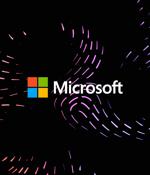Security News

Microsoft announced today that the Store version of Windows Subsystem for Linux is generally available for Windows 10 and 11 customers. Following customer requests, all Windows 10 users can now use Linux GUI apps after updating to the Microsoft Store version.

Microsoft is investigating and working on fixing Remote Desktop issues on Windows 11 systems after installing the Windows 11 2022 Update. "After installing Windows 11, version 22H2, the Windows Remote Desktop application might stop responding when connecting via a Remote Desktop gateway or Remote Desktop Connection Broker," the company explained.

A recently published study evaluated 1.6 million Microsoft 365 users across three continents, finding that 90% of organizations had gaps in essential security protections. To find out, CoreView experts reviewed the most common problems to understand what companies are doing well and reveal gaps in IT management strategies.

BYOD policies have made enterprise networks more diverse, and devices that used to only be connected to corporate networks are now likely on the internet as well. "You have to think of everything that runs software or code in your network as you do threat modeling for your network, and then have a plan in place," Ganacharya said.

Microsoft is rolling out fixes for problems with the Kerberos network authentication protocol on Windows Server after it was broken by November Patch Tuesday updates. As we reported last week, updates released November 8 or later that were installed on Windows Server with the Domain Controller duties of managing network and identity security requests disrupted Kerberos authentication capabilities, ranging from failures in domain user sign-ins and Group Managed Service Accounts authentication to remote desktop connections not connecting.

A developing threat activity cluster has been found using Google Ads in one of its campaigns to distribute various post-compromise payloads, including the recently discovered Royal ransomware. "Observed DEV-0569 attacks show a pattern of continuous innovation, with regular incorporation of new discovery techniques, defense evasion, and various post-compromise payloads, alongside increasing ransomware facilitation," the Microsoft Security Threat Intelligence team said in an analysis.

Microsoft has released optional out-of-band updates to fix a known issue triggering Kerberos sign-in failures and other authentication problems on enterprise Windows domain controllers after installing cumulative updates released during November's Patch Tuesday. "After installing updates released on November 8, 2022 or later on Windows Servers with the Domain Controller role, you might have issues with Kerberos authentication," Microsoft explained.

NET Core versions until it reaches the end of support next month.NET Native releases, warned this July, Microsoft will stop providing technical support or servicing updates after EOS. "We recommend moving to.NET 6 as soon as possible. If you are still using.NET Core 3.1 after the end of support date, you'll need to update your app to.NET 6 or.NET 7 to remain supported and continue to receive.NET updates," Whittaker said.

Microsoft has resolved a known issue triggering errors and temporarily causing the taskbar and desktop to disappear on Windows 10 systems. "You might experience an error in which the desktop or taskbar might momentarily disappear, or your device might become unresponsive," Microsoft explains on the Windows health dashboard.

Okta, a leading provider of authentication services, has shared a workaround for ongoing issues preventing customers from logging into their accounts using Microsoft Office 365 Single Sign-On. Based on a new incident added to the company's status page, the outage affects users across the United States, EMEA, and Japan. "We have deployed a fix across all cells. After deploying the fix, we are still seeing a number of issues. We are still actively investigating these issues to isolate a fix. We are also actively monitoring the systems," the company said in a recent update.